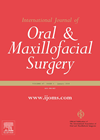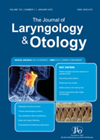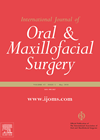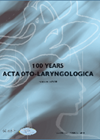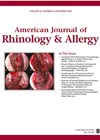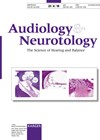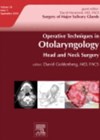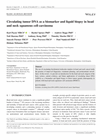
Journal Reviews
Is bone scanning still of value?
This is an article from Australia of 109 patients, 83 of which had CT, 72 MRI and the presence of bone invasion on imaging was compared with the histopathology. Bone invasion was present in 44 of 109 resection specimens. Bone...
A global survey of tracheostomy healthcare provision and patient participation: requirements for improvement
Patients with tracheostomy require comprehensive care which should begin in the preoperative phase and go through immediate postoperative and discharge phases with patient involvement as well. The authors assessed this with a multicentre, cross-sectional survey using a mailing list held...
Do you feel me? Emotional processing post-traumatic brain injury
Traumatic brain injury (TBI) accounted for just under three million accident and emergency admissions in the US in 2013, with common causes including falls, traffic accidents and assaults. Difficulties processing and expressing affective communication is a common sequela of TBI...
Deglutition in pharyngolaryngectomy patients
Circular defects after total pharyngolaryngectomy present a reconstructive challenge. In this study, the authors compared the swallowing results after three reconstructive techniques: free forearm flap, free jejunal loop and folded pectoralis major flap. Forty-six patients were included and were evaluated...
Lymph node ratio in tongue cancer
This is an analysis of 88 patients treated in Switzerland between 2003 and 2012. All patients had a selective neck dissection and recurrence occurred in 25 patients. Overall and disease specific survival were 72% and 80%. They specifically looked at...
Long-term quality outcomes of bimaxillary surgery of obstructive sleep apnoea
This is a review of 12 patients at two years postoperatively and again at at least 17 years. Successful outcome of a decrease in apnoea-hypopnoea index (AHI) of greater than 50% was thought to be success. Eight of the initial...
Should we do septoplasty in young adults/adolescents?
Nasal obstruction is a common complaint in both children and adults in the outpatient department. Causes for obstruction include allergic rhinitis, septal deviation, turbinate hypertrophy and chronic sinusitis with or without nasal polyps. For symptomatic patients with moderate to severe...
An eye-opening resection technique
It is widely accepted that the gold standard treatment of inverted papilloma of the maxillary sinus (IPMS) is endoscopic excision via medical maxillectomy or mega antrostomy, and these approaches can be augmented by a Caldwell-Luc or canine fossa trephination if...
Round window niche drilling with intratympanic for ISSHL. A new option for salvage?
This paper from China compares the technique of widening the round window via a posterior tympanotomy approach and steroid-soaked gelatin sponge with intratympanic steroids alone for salvage therapy in severe idiopathic sensorineural hearing loss. Salvage therapy was defined as patients...
Avoiding the sweaty cheek
Frey’s syndrome is a common (10-40%) and important complication following parotid surgery. Gustatory sweating during oral stimulation can be embarrassing as it is accompanied by flushing and a sensation of heat. This is as a direct result of regenerated parasympathetic...
Tonsillectomy in or out?
Although tonsillectomy is the most common surgical act performed in ENT practice, there is still some concern about the safety of outpatient or day surgery scheduling, especially in adults. Although this has been common practice in many departments for some...
Core or fine needle assessment in lymphadenopathy and salivary gland tumours
This paper from the Republic of Korea analyses 278 patients retrospectively, 112 of which underwent fine need aspiration and 166 core needle biopsies. Eleven patients had indeterminate fine needle aspiration cytology, six of whom had an additional core biopsy. The...

